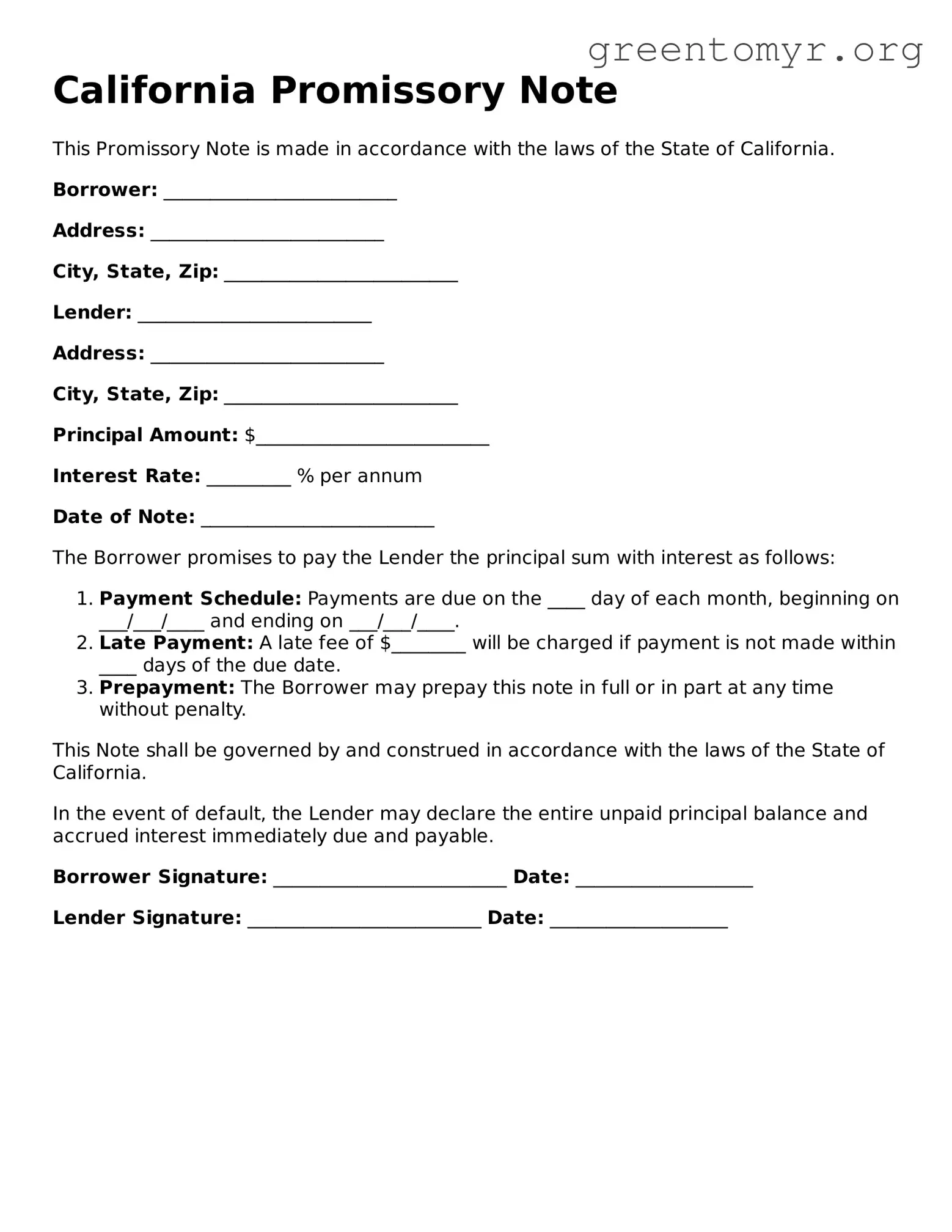California Promissory Note
This Promissory Note is made in accordance with the laws of the State of California.
Borrower: _________________________
Address: _________________________
City, State, Zip: _________________________
Lender: _________________________
Address: _________________________
City, State, Zip: _________________________
Principal Amount: $_________________________
Interest Rate: _________ % per annum
Date of Note: _________________________
The Borrower promises to pay the Lender the principal sum with interest as follows:
- Payment Schedule: Payments are due on the ____ day of each month, beginning on ___/___/____ and ending on ___/___/____.
- Late Payment: A late fee of $________ will be charged if payment is not made within ____ days of the due date.
- Prepayment: The Borrower may prepay this note in full or in part at any time without penalty.
This Note shall be governed by and construed in accordance with the laws of the State of California.
In the event of default, the Lender may declare the entire unpaid principal balance and accrued interest immediately due and payable.
Borrower Signature: _________________________ Date: ___________________
Lender Signature: _________________________ Date: ___________________
